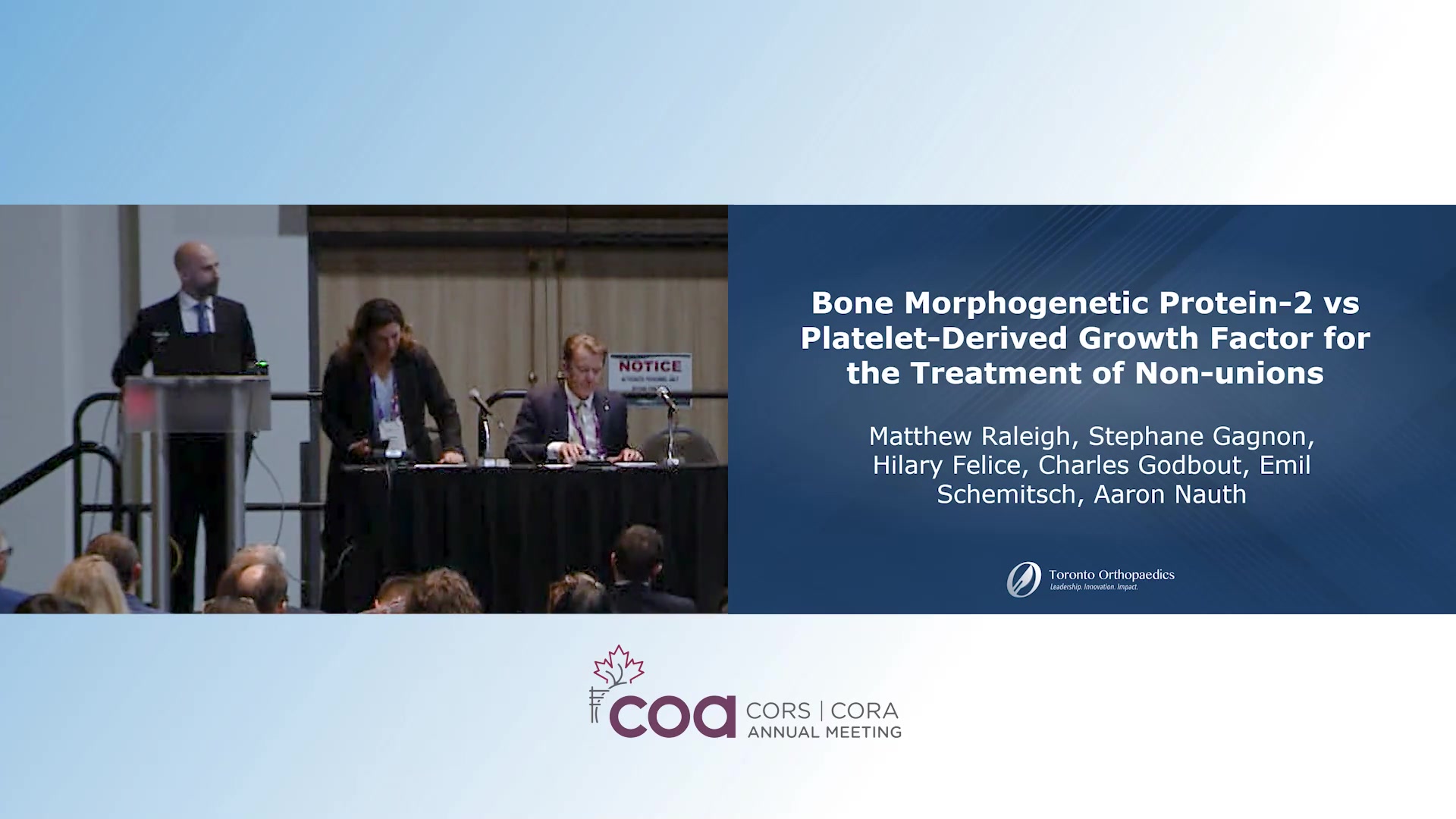Please login to view this media

- Talk
- 23/06/2023
- CANADA
Founders' Award Winner - Bone Morphogenetic Protein-2 vs Platelet-Derived Growth Factor for the Treatment of Non-Unions
Description
In this presentation, Dr. Matthew Raleigh, an orthopedic surgery resident at the University of Toronto, discusses his research on the use of bone morphogenic protein-2 (BMP-2) and platelet-derived growth factor (PDGF) for treating non-unions, particularly focusing on a study supervised by Dr. Aaron Nauth at the Muscle Skeletal Research Laboratory at Saint Michael's Hospital.
Raleigh begins by explaining the challenges of treating non-unions, which are incomplete bone healing incidents encountered by many clinicians. He notes that the gold standard for treating non-unions is autologous bone grafting, which has limitations including limited graft volume, surgical site morbidity, and variable rates of union. Thus, there is a need for alternative treatments, such as the promising use of osteoinductive proteins like BMP-2 and PDGF.
The study involved creating an atrophic non-union model in 50 Fischer 344 rats, with a critical-sized bone defect stabilized for evaluation. The animals were divided into five groups to compare the effectiveness of PDGF and BMP-2 against a control group. After 10 weeks of healing monitored through bi-weekly radiographs, the effectiveness of the treatments was assessed both qualitatively and quantitatively by two blinded orthopedic surgeons.
Results revealed that the BMP-2 treatment group achieved a 100% radiographic union rate, significantly surpassing the 20% in the PDGF group. Additionally, BMP-2 demonstrated superior scores in microCT analysis, indicating greater bone volume and higher mechanical properties compared to PDGF. Though these promising outcomes were based on a small animal model, Raleigh emphasizes the need for future clinical investigations to validate these findings in humans.